Chronic pain burdens more than 20% of Americans. Some are turning to microdoses of THC for help. There is evidence that small doses of THC can alleviate pain for many people.
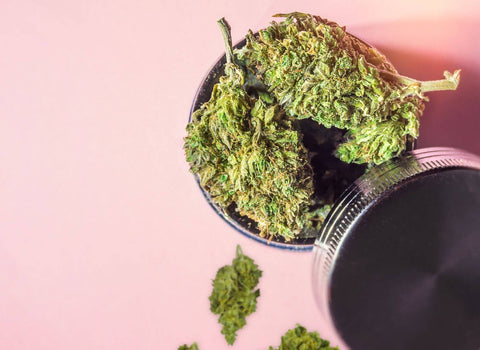
Microdosing THC delivers the benefits of cannabis without getting you high. There are many reasons why cannabis users microdose. Low doses of THC help reduce stress and anxiety, fight off insomnia, boost energy, improve focus—and treat chronic pain.
What Does Microdosing Mean?
Microdosing refers to the practice of taking a smaller-than-usual amount of a substance, in this case Delta 9 THC. People take very low amounts of THC to enjoy its benefits while staying below the threshold for psychoactive effects. You get all the good stuff without getting high.
10mg and lower are considered low THC doses. Anything under 5mg of THC is a microdose. Microdosing beginners are always advised to start low and go slow, increasing dosages incrementally until they find the perfect level.
Some of the most common ways to microdose THC are Delta 9 THC edibles, sublinguals, drinks, and vapes. However, for dosage control, as well as efficacy and safety, edibles such as THC gummies can’t be beat.
Our hemp-derived, lab tested Delta 9 gummies are federally legal. They contain the highest-quality organic American hemp and offer the perfect dosage of THC and other cannabinoids.
THC beverages are another great way to microdose safely and efficiently. Our Buzz Drops contain a customized ratio of hemp-derived cannabinoids to buzz up your favorite drink.
Benefits of Microdosing THC
Emerging scientific research supports microdosing THC as an alternative treatment for symptoms of:
- Dementia and Alzheimer’s disease
- Crohn's disease
- Inflammation
- Anxiety disorders
- Depression and mood disorders
- Chronic migraines
- Nausea
- Muscle tension
- Posttraumatic stress disorder (PTSD)
- Attention deficit hyperactivity disorder (ADHD)
- Glaucoma
- Cancer
While more research is needed on the benefits of microdosing THC, clinical evidence and an abundance of anecdotal reports point to its efficacy at treating pain.
Low THC doses have beneficial effects in treating chronic pain, cancer pain, and neuropathic pain. Paradoxically, larger doses of THC don’t alleviate pain any better than small ones—and in some cases may even exacerbate it.
Our Delta 9 THC gummies are always a good choice, whether you’re trying to ease pain or de-stress.
Does Microdosing THC Alleviate Pain?
We already know THC can improve sleep and alleviate symptoms of depression. Many medical marijuana advocates—cancer and AIDS patients, migraine sufferers, and people with movement disorders—attest to microdosed cannabis helping relieve pain.
A research paper found that cannabis use for cancer pain has led to a reduction in opioid use by 64% and improved the overall quality of the patients’ lives. In addition, microdosing THC has shown benefits in treating migraines. Many people suffering from chronic migraines have experienced a decrease in chronic pain episodes after implementing a microdosing regimen.
In 2015, research was conducted on the use of cannabis and cannabinoids for treating various chronic pain conditions. The researchers suggested that cannabis might be an effective way to relieve chronic pain, including neuropathic pain, arthritis pain, and cancer pain.
Syqe Medical, an Israeli medical technology company, conducted a trial involving enrolling 27 people with chronic pain. In the trial, microdoses of THC—0.5mg and 1mg—as well as a placebo, were administered via a specially designed Syqe Medical inhaler.
The results, published in the European Journal of Pain, show that microdosing marijuana at both dosing levels significantly reduced pain. The pain reduction remained stable for at least two and a half hours.
The 1mg THC dose produced the best chronic pain relief, with none of the participants experiencing cognitive impairment after microdoses were administered. Those who received the 1mg dose of THC reported feeling more euphoric than those who received smaller doses.
What is Better for Pain Management: CBD or THC?
THC and CBD seem to work better together than either cannabinoid in isolation. The anti-inflammatory effects of CBD, paired with THC’s analgesic properties, seem to give the best results.
Combined with CBD and other cannabinoids, THC has more beneficial effects than microdosing THC in isolation. This synergistic action is known as the entourage effect.
Our full spectrum gummies contain both THC and CBD, as well as CBN and other compounds for the full entourage effect.
Best THC:CBD Ratio for Pain
Different THC to CBD ratios can have slightly different effects, based on the person taking the product.
The most effective ratio of THC and CBD for pain, according to a 2020 study, seems to be 1:1. This ratio helps you get used to the effects of both compounds. Once you get more familiar with THC and CBD, you can experiment with different ratios.
Our Delta 9 THC Sour Gummies provide the most optimal THC and CBD ratio to alleviate pain.
Containing equal concentrations of THC and CBD—10mg THC and 10mg CBD—they are bursting with flavor. They are GMO-free and contain only natural ingredients; they tested in a third-party lab that ensures quality and safety.
Similarly, our Bliss Delta 9 Gummies have the same 1:1 ratio of THC and CBD, with a lower concentration. Get ready to experience the most blissful evenings with this 5mg THC and 5mg CBD unique blend of hemp extracts. Honeydew melon flavor elevates the gummies to a whole new level of yum.
Remember to always consult health professionals when using cannabis products for medical reasons.
Sativa or Indica for Pain?
Among the many types of cannabis plants, sativa and indica are most well known. Sativas tend to have an invigorating, energizing effect. They are said to help reduce anxiety symptoms and increase focus. Indicas are typically associated with full-body effects, increasing deep relaxation and reducing insomnia.
One online survey, featured in the Journal of Alternative and Complementary Medicine in 2014, showed that participants preferred indica strains for pain management, as well as sleep and sedation. Sativa strains were claimed to have improved energy and mood. Participants reported significant reduction in pain with non-migraine headaches, neuropathy, spasticity, and joint pain.
Sativa often has lower doses of CBD and higher doses of THC. Because it has a stimulating impact, sativa strains are popular for daytime use.
In contrast, indica strains often have higher levels of CBD, but the THC content is not necessarily lower. Due to its intensely relaxing effects, indica is popular for evening or nighttime consumption. For some, it helps reduce nausea and pain and increase appetite.
Hybrid strains combine qualities of both indica and sativa. Our nama CBD edibles contain hybrid combinations that include doses of THC and CBD for the entourage effect.
Our full spectrum Euphoria gummies, containing curated hybrid cannabis, have THC and CBD to manage chronic pain.
Does Microdosing Cannabis Treat Chronic Pain?
Microdosing THC may ease certain types of chronic pain. In combination with other minor cannabinoids—especially CBD and CBN—THC has shown relief with neuropathic, cancer, arthritic, sciatic, back pain, pain after surgery, and pain caused by fibromyalgia.
Neuropathic Pain
Neuropathy is a disorder of malfunctioned peripheral nerves. A number of conditions can cause this nerve damage, such as diabetes and infection. The symptoms of neuropathy are characterized by:
- Tingling, prickling, or numbness in hands or feet
- Weak, heavy feelings in arms and legs
- Sharp pain
- Increased sensitivity to touch
While the research on THC’s role in treating neuropathy is limited, there is more research substantiating cannabinol’s effects on neuropathy.
One study found that all 29 participants showed significant improvement in pain and troublesome sensations. Another study examined the data from recent randomized controlled trials that evaluated cannabinoids in the treatment of neuropathic pain. The study concluded that medical cannabis is as safe and effective as mainstream neuropathic drugs. Many users report that they prefer cannabis over pharmaceuticals, as it provides pain relief without other side effects that come with prescription drugs.
Cannabinoids and Cancer
Medical cannabis has long been used in treating symptoms accompanying cancer chemotherapy, like lack of appetite, nausea, and vomiting. A recent survey found that 30% of young adult cancer patients use cannabis to deal with symptoms of pain, lack of appetite, insomnia, and poor overall well-being.
More recently, researchers reported that THC and other cannabinoids can slow tumor growth and induce apoptosis (cause cells to self-destruct) of certain types of cancer cells. However, these are mostly studies conducted on animals; more clinical trials and studies on treating cancer in humans are planned.
Many cannabis compounds—including CBD, THC, and terpenes—have been identified as potential pain relievers for cancer patients. They also show promise at reducing chemotherapy side effects and alleviating trauma-induced nerve disorders resulting from tumor growth. Many cannabis compounds act as anti-inflammatory agents, as well.
Some evidence suggests that cannabis can help pediatric cancer symptoms with minimal side-effects.
Cannabis and Post-Surgery Pain Relief
Unlike opioids that are generally used in relieving post-surgery pain, cannabis has low potential for addiction. Microdosing THC has extremely low addiction risk, while providing pain management for many users..
For patients recovering from a surgery, it is recommended to microdose cannabis via edibles rather than smoking or vaping cannabis. Microdosed edibles are safe to use during post-op recovery. Full spectrum edibles are best for CBD’s anti-inflammatory properties and THC’s analgesic effects.
A lot of people who have recently had surgery find it very helpful to maintain their cannabis routine throughout the recovery process.
Cannabis and Back Pain
CBD and THC may alleviate back pain by reducing inflammation, combating anxiety and tension, and improving sleep. CBD is generally considered a full-body treatment—it does not target back pain specifically—and a contributor to an overall feeling of relaxation and pain relief.
A 2022 study sought to understand the efficacy of cannabis in reducing back pain. One of the main objectives of the study was to explore medical cannabis as an alternative to opioid use. Long-term use of opioids often leads to various drug habituation, abuse, and addiction.
Cannabis was shown to be effective to treat back pain. However, additional studies are needed to follow up on the long-term use of medicinal cannabis.
Cannabis and Fibromyalgia
Fibromyalgia is a chronic pain disorder that causes musculoskeletal pain. Underlying symptoms of fibromyalgia include chronic fatigue, insomnia, and various cognitive issues. As there is no cure currently for this condition, treatment options that focus on pain management include microdosing THC.
CBD and THC have been used to alleviate symptoms of chronic pain and reduce inflammation associated with fibromyalgia. A study on safety and efficacy of medical cannabis in treating fibromyalgia included THC and CBD. People with fibromyalgia experienced pain relief when taking CBD combined with microdoses of THC.
Cannabis is a non-addictive alternative to opioid prescriptions. A 2011 study of 56 participants indicated that the cannabis users within the study experienced benefits of microdosing cannabinol such as a relatively immediate reduced pain and stiffness.
Some research shows that a synthetic cannabinoid called nabilone helps treat chronic nerve-related pain and fibromyalgia. Nabilone is similar in composition and effect to hemp-derived THC.
A randomized, double-blind, placebo-controlled trial was conducted to determine the benefit of nabilone in pain management in patients with fibromyalgia. The results show that nabilone seems to be a beneficial, well-tolerated treatment option for fibromyalgia patients.
Cannabis and Arthritis
Various studies have suggested that cannabis has anti-inflammatory properties. Anecdotally, people suffering from arthritis who have microdosed CBD and THC report noticeable pain relief, sleep improvement, and reduction in anxiety symptoms. Full spectrum CBD products seem to be most effective at reducing arthritic pain and inflammation.
Of the different cannabinoids, CBD seems to be most effective for osteoarthritis relief. It appears that CBD blocks or debilitates the GPR55 receptor in the endocannabinoid system, which may slow osteoarthritis by facilitating bone reabsorption. It is thought that THC and CBN may assist CBD to be even more effective, but further research is needed to prove this out.
Most arthritis patients struggle with poor sleep resulting from acute joint pain. Our Sleep Plus vegan gummies have a sleep-promoting blend of 2mg THC, 25mg of CBD, and 3mg of melatonin.
In fact, all of our sleep gummies include melatonin to promote your well-deserved eight hours of sleep. They make the perfect addition to your nighttime routine with all the benefits of CBD and hemp-derived Delta 9 THC.
THC and Sciatic Nerve Pain
A recent study suggested that THC may alleviate pain from sciatica by disrupting signals between the pathways in the brain that process pain.
Some people suffering from sciatic nerve inflammation are concerned about the psychoactive effects of THC, so they turn to CBD to treat their sciatica. Fortunately, microdoses of THC—such as our Bliss Gummies contain—will not cause you to get high. It is thought that THC and CBD together are the most effective combination for reducing pain and inflammation at the sciatic nerve.
How Long Does THC Take to Kick In?
THC absorption times vary based on the consumption method. Resultant analgesic (pain-relieving) timelines follow absorption times. Let’s look at the time needed for the effects of medical cannabis to kick in across the different methods of consumption.
Vaping or smoking
Inhaling is the most popular way to use cannabis. The effects of inhaling cannabis typically begin after only a few minutes, and peak after 30 minutes. The effects of inhaled cannabis last for 2-4 hours, during which the body absorbs about 25% of the active compounds.
However, vaping or smoking makes it hard to measure just how much THC you’ve consumed, making them suboptimal for those seeking to microdose THC for pain.
Edibles
Edibles are snacks such as gummies and brownies. They contain THC, CBD, and other minor cannabinoids like CBN, CBG, and THCV.
Our edibles offer the most precise way of consuming cannabis, because you know exactly how much THC and CBD you’re consuming. This consumption method is slower to release active compounds because the edibles travel down the digestive tract. It takes anywhere from 30 minutes to several hours for the pain-relieving effects to kick in, but microdosed edibles have much longer-lasting efficacy than smoking or vaping.
Topicals
Another method of using cannabis is via topicals. These include creams, ointments, and salves that are applied directly to the skin. This method is best used to decrease localized pain and inflammation, such as joint pain. Using topicals is unlikely to give you a high.
Beverages
Cannabis-infused drinks are another convenient, more discreet way to microdose. After ingestion, it may take from 30 minutes to 2 hours for the effects to kick in. THC drinks make a great alcohol alternative, ideal to be shared in a social setting.
Tinctures
Cannabis tinctures are a popular way to microdose. They are sold in 15 to 30 ml bottles, and the THC concentrations vary on the brand. It is a convenient way to microdose, but beforehand you need to calculate the concentration of THC in one milliliter of tincture, as well as how many drops are in one milliliter.
Sublinguals
Lozenges, gum, and lollipops fall under the sublinguals category. They kick in faster because of their quick absorption method, even though they are ingested yet not actually swallowed.
What Are the Best Edibles for Pain Management?
Our edibles are 100% vegan, 100% premium hemp-derived. They contain hemp grown in the USA (pure American, baby!). All our edibles are 100% Federally legal because they comply with the conditions of the 2018 Farm Bill. We make sure to include only natural ingredients, no artificial flavorings and colors. Plus, they taste phenomenal!
If you don’t believe us, we suggest you try out some of our top microdosing edibles for alleviating pain.
- Bliss Gummies contain the most favorable THC:CBD ratio for reducing pain levels. They are fruit-filled, flavor-packed, and made for the perfect blissful evening—5 mg of THC and 5 mg of CBD will make sure of it.
- Flavored with blood orange and infused with a custom blend of energy-promoting nutrients, Energy Gummies have a low 1:2 ratio of THC and CBD. These perfect yummy gummies will keep you uplifted through the day and pain-free.
- If you’re new to microdosing—or new to cannabis altogether—these babies might just be the perfect choice. Relax Plus Gummies offer precisely that: deep relaxation, muscle tension relief, and much needed pain alleviation. They have a THC to CBD ratio of 1:5.
What is THC?
Tetrahydrocannabinol (THC) is the main cannabinoid found in cannabis. It causes the trademark psychoactive effect for which weed is famous. There are several types of THC in the cannabis plant, such as delta-9-tetrahydrocannabinol (Delta 9 THC), delta-8-tetrahydrocannabinol (Delta 8 THC), Delta 10, and more. Cannabis also contains many other cannabinoids, such as cannabinol (CBD), CBN, and CBG.
How is CBD Different from THC?
Cannabidiol is a non-psychoactive chemical compound. It is typically derived from hemp, but it can also be extracted from marijuana. Marijuana-extracted CBD contains higher levels of THC and is federally illegal in the US. CBD does not make you high.
At sufficient doses, THC can cause psychoactive effects like changes in mood, consciousness, motor control, and memory processing. Our products contain low doses of THC which means no psychoactive effects.
The Endocannabinoid System
When tetrahydrocannabinol enters our system, it binds to two main cannabinoid receptors in the endocannabinoid system, CB1 and CB2 receptors. The endocannabinoid system (ECS) is a network of signals and receptors that regulate a variety of functions and processes in our body—hormones, immune function, memory, appetite, and pain perception, among others.
Our body produces natural cannabinoids that interact with ECS receptors. Phytocannabinoids (cannabinoids from cannabis, e.g., THC and CBD) interact with CB1 and CB2 to mimic the effects of our own endocannabinoids and regulate important bodily functions.
THC increases dopamine, causing the euphoric, psychoactive feeling. In contrast, CBD has anti-anxiety properties—it causes deep relaxation and soothes the mind. CBD doesn’t seem to bind to CB1 and CB2 receptors directly, but impacts the endocannabinoid system by antagonizing or regulating the processes of CB1 and CB2 receptors when THC is present.
When THC and CBD are taken together, CBD regulates how THC interacts with the endocannabinoid system. CBD acts as a safety instructor to THC and softens effects such as increased heart rate, sedation, and anxiety.
Many of our nama CBD edibles, such as THC gummies with CBD, are the perfect combo of THC, CBD, and other cannabinoids, and create the entourage effect.
For a better understanding of both cannabinoids, read our guide to the differences between CBD and THC.
Product QUIZ
Need help deciding what product is best for you? Take our quiz, just three questions until your perfect match!
Is THC Legal?
THC is legalized in some states, and illegal in others. On a federal level it is illegal—except for some loopholes that make some THC products legal. There are also different types of THC (Delta 9 vs Delta 8 THC, for example), further complicating the picture.
If that’s about as clear as mud, just know that all of our THC products are federally legal (and legal in most states).
Let’s have a look at the legality of Delta 8 and Delta 9 THC.
Is Delta 9 Legal?
Delta 9 THC is federally legal under Farm Bill limitations, and is otherwise illegal. The 2018 Farm Bill differentiates hemp from marijuana and legalizes THC products derived from hemp that contain no more than 0.3% Delta 9 THC by dry weight. All our products meet Farm Bill requirements and are legal on a federal level.
Last we knew, Delta 9 THC was legal in 48 states and illegal in Kansas and Idaho.
See our guide to state-by-state Delta 9 legality for more detailed info on each state’s legislation surrounding Delta 9.
Is Delta 8 Legal?
Similarly, Delta 8 THC is federally legal in the US under Farm Bill criteria.
However, fourteen US states have made Delta 8 THC illegal:
- Alaska
- Arkansas
- Arizona
- Colorado
- Delaware
- Iowa
- Idaho
- Kentucky
- Montana
- Mississippi
- New York
- Rhode Island
- Vermont
- Utah
Frequently Asked Questions about Microdosing THC for Pain
Is CBD better than painkillers?
Studies have not yet shown any evidence that medical cannabis is helpful for acute pain. When it comes to chronic pain, however, there is promising research for the use of THC and CBD in neuropathic pain.
As the list of adverse effects of opioids is growing, cannabis has emerged as an alternative to painkillers. Microdoses of cannabis are promising because they do not cause severe abuse and addiction, as seen with synthetic drugs.
A study from 2020 looked at adults who relied on opioids to treat their chronic pains for more than a decade. With cannabinoids, half of the participants were able to stop all opioids. They said they prefer cannabinoids over them because of less severe side effects, lower effects from withdrawal, and better outcomes.
How long do CBD gummies last for pain?
Compared to smoking or vaping, microdosed edibles generally last much longer. According to some users, that time varies between 5-8 hours. Because some edibles contain THC, peak blood levels occur around three hours after administration, and that’s when the effects are likely to be the most intense.
The length of an edible high usually depends on a variety of factors, including the dose and potency. Individual factors—metabolism, weight, and tolerance—should also be taken into consideration.
Which cannabinoid is best for inflammation and pain?
Many people have turned to CBD for inflammation and pain management. Due to its anti-inflammatory properties, CBD has many beneficial effects on a number of health conditions like joint pain, neuropathic pain, rheumatic diseases, and inflammatory bowel diseases.
There are many forms of CBD one can take for inflammation: CBD isolate, broad spectrum CBD, and full spectrum CBD. Check out our extensive guide on the differences between CBD isolate and full spectrum CBD.
Broad spectrum CBD gummies contain 10 mg of custom formulated broad spectrum hemp extract. Plenty of CBD in tandem with other minor cannabinoids like flavonoids and terpenes—but no THC for that euphoric high.
Can CBD help people with ADHD?
CBD in combination with low doses of THC and other minor cannabinoids (eg. CBN, CBG) may reduce symptoms of ADHD, according to recent studies.
People diagnosed with ADHD report on lack of appetite, disruption of sleep, increased anxiety levels, and mood changes. CBD has anti-anxiety properties—it soothes the mind and causes deep relaxation. It is believed that higher percentage of CBD over THC have a positive effect on ADHD, yet the best results are achieved when THC and CBD are combined.
In addition, one major problem people with ADHD experience is the potential addiction and substance abuse of approved ADHD medication. In contrast, microdosing CBD and other cannabinoids combined does not cause addiction, so it is a safer alternative to pharmaceuticals like Adderall.
How do you feel when taking CBD gummies?
It takes about 15-45 minutes to feel the effects of CBD. Unlike THC, CBD does not have any psychoactive effects. Instead, it offers a subtle feeling of calm and relaxation.
CBD can have different effects depending on the time of day. Your brain might be more active during the day, so you may notice clearer focus and more energy. At night, in contrast, CBD can promote restfulness and relaxation.
How long does it take your body to process CBD?
CBD can stay in your system from anywhere from a few hours to a month or more. This depends on various factors like amount, duration, frequency, metabolism, food, and method of administration.
The half-life (how long your body takes to eliminate one-half of a substance) of CBD in your body can range from about an hour to up to five days. Chronic oral consumption of CBD products can increase its half-life to 2-5 days, while with smoking methods, CBD’s typical half-life is 31 hours. This means that CBD can stay in your system for 10-25 days if taken orally, but only about a week after smoking.
Can I take CBD and drink alcohol?
Alcohol has the ability to reduce inhibitions and promote feelings of relaxation. CBD can have similar effects on the human body, but research has shown that both together may amplify each other’s effects.
In one clinical trial, researchers looked at a group of healthy volunteers who were administered placebo, alcohol, alcohol plus CBD, and CBD doses. The results showed that participants who received alcohol, and alcohol plus CBD together—but not CBD alone—experienced significant impairments of motor and psychomotor performances.
Combining alcohol with CBD may cause drowsiness and impaired coordination. CBD can also potentially increase the effects of alcohol, causing the person to feel more drunk or impaired faster.
Does CBD interfere with bone healing?
There is no evidence that CBD interferes with bone healing. On the contrary, it may accelerate the process.
CB1 and CB2 cannabinoid receptors are expressed in bone and regulate bone homeostasis in humans and rodents. CBD treatment has shown to enhance fracture healing in rats. CBD has also shown to enhance bone healing, but validation in clinical trials is needed.
nama CBD FDA & Legal Disclaimer
Our products are not intended to diagnose, treat, cure, or prevent any disease. They are not a replacement for prescription medications and have not been evaluated by the Food and Drug Administration (FDA).
The information provided on this website does not, and is not intended to, constitute legal advice or any statements of the status of any laws. Any information, content, and materials available on this site are for general informational purposes only, and are not intended to be relied upon for any purpose.
Readers of this website should contact their attorney to obtain advice with respect to any particular legal matter including decisions on what products are, or are not, legal to sell, possess, or consume. No reader, user, or browser of this site should act or refrain from acting on the basis of information on this site without first seeking legal advice from their own counsel in the relevant jurisdiction.
Only your individual attorney can provide assurances that the information contained herein – and your interpretation of it – is applicable or accurate for your particular situation. Use of, and access to, this website or any of the links or resources contained within the site do not create an attorney-client relationship between the reader, user, or browser, and website authors, contributors, contributing law firms, or committee members and their respective employers.
More From the nama Family
Small batch edibles crafted for different times of the day and experiences.
More articles
About
Learn
Join us on this journey

© Copyright 2025 nama Products LLC. All Rights Reserved.
†These statements have not been evaluated by the Food and Drug Administration. These products are not intended to diagnose, treat, cure or prevent any disease. All information presented here is not meant as a substitute for or alternative to information from health care practitioners. Please consult your health care professional about potential interactions or other possible complications before using any product.
††The information provided on this website does not, and is not intended to, constitute legal advice or any statements of the status of any laws. Any information, content, and materials available on this site are for general entertainment purposes only, and are not intended to be relied upon for any purpose.
123 John Doe Street
Your Town, YT 12345
Store Hours
Sun: Closed
Mon-Fri: 9:00 - 17:00
Sat: 10:00 - 13:00
What to expect at pickup
Closed
Closing at 5pm
Closing at 5pm
Closing at 5pm
Closing at 5pm
Closing at 5pm
Closing at 1pm

![Buzz Packs™ [THC and CBD Powder Drink Mix]](http://www.namacbd.com/cdn/shop/files/nama_buzz_packs_thc_drink_pack_white_background.png?v=1741884660&width=480)
![Buzz Packs™ [THC and CBD Powder Drink Mix]](http://www.namacbd.com/cdn/shop/files/Buzz_Packs_Label.png?v=1741884660&width=480)
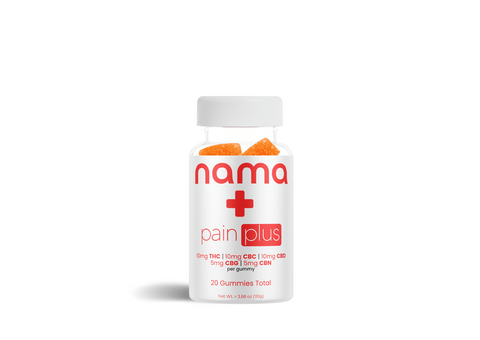
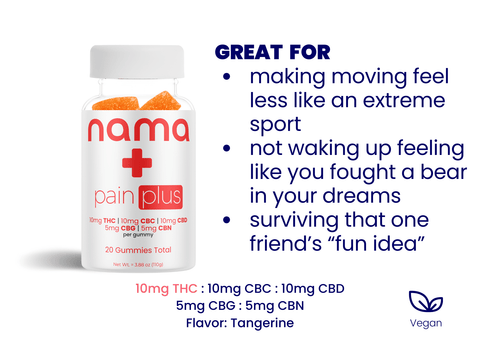
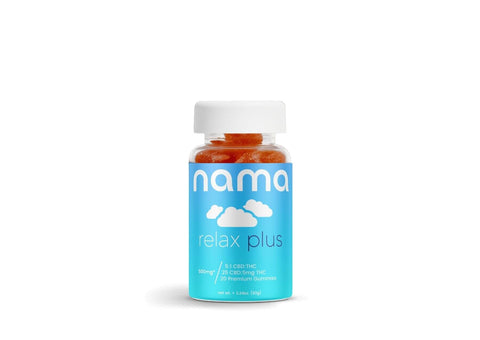
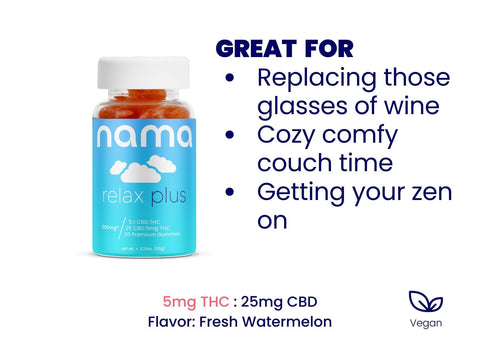
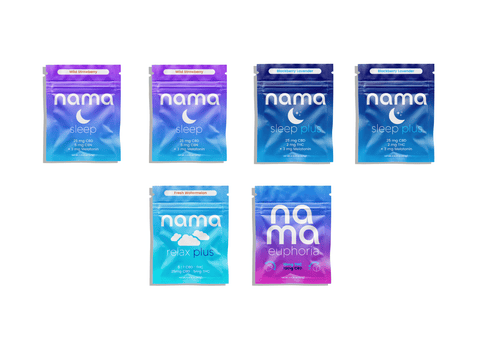
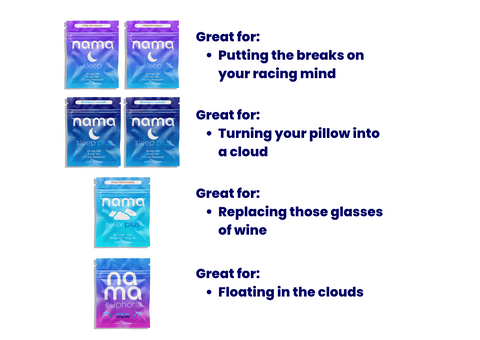
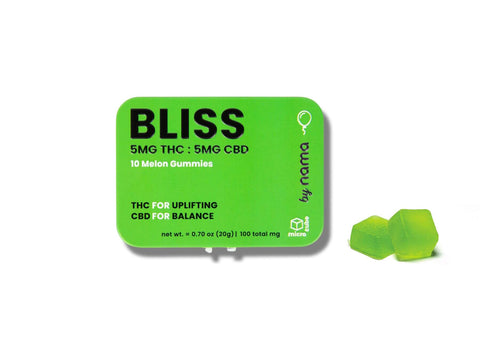
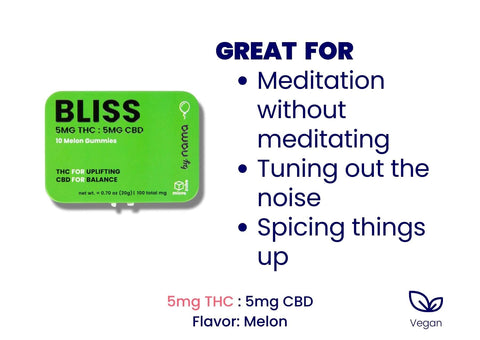
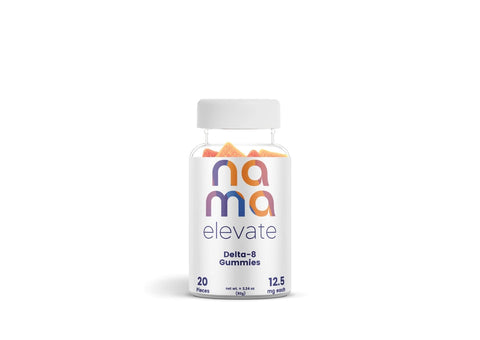
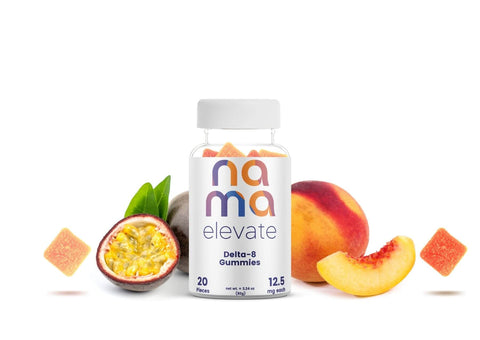
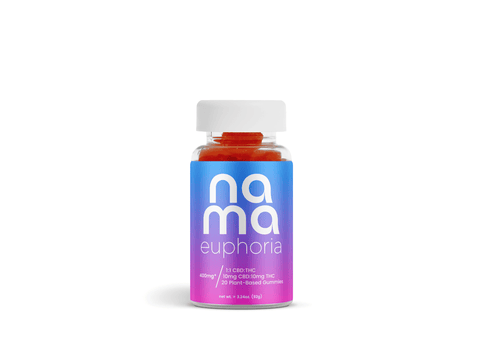
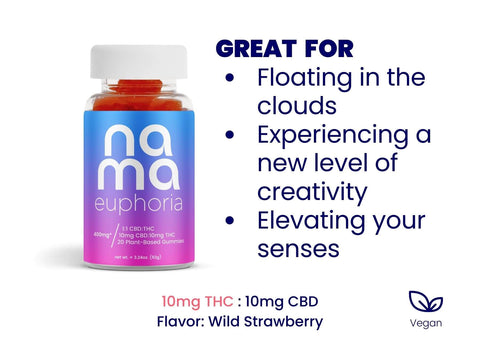
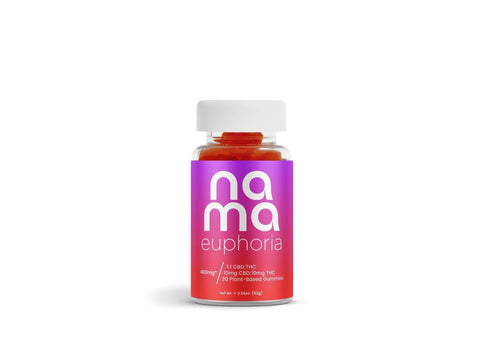
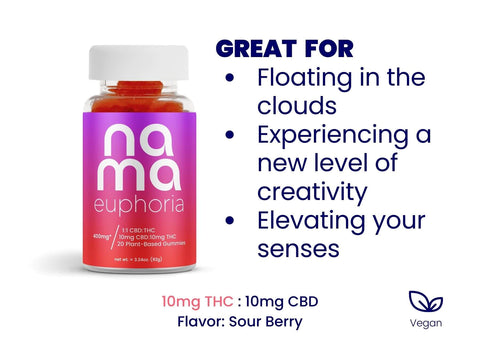
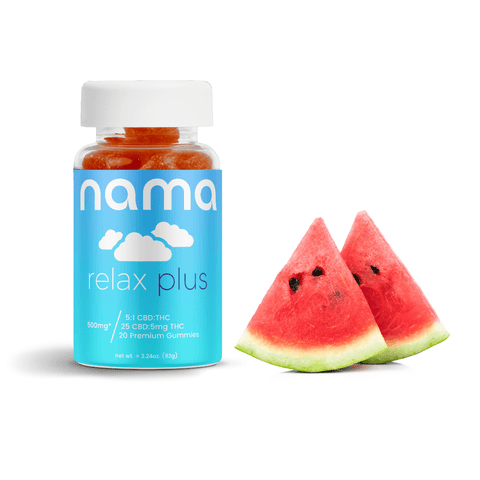
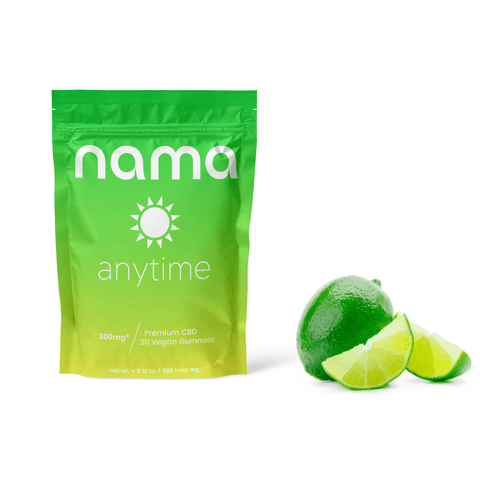
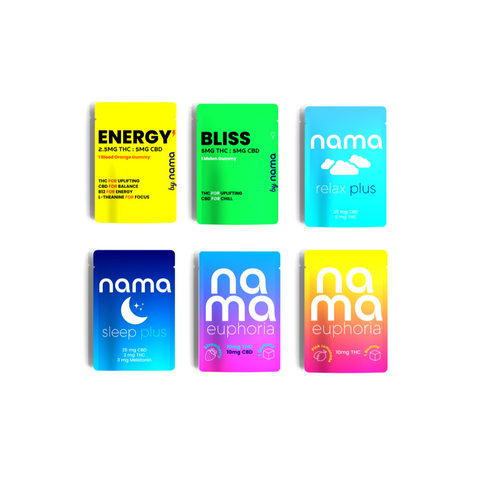
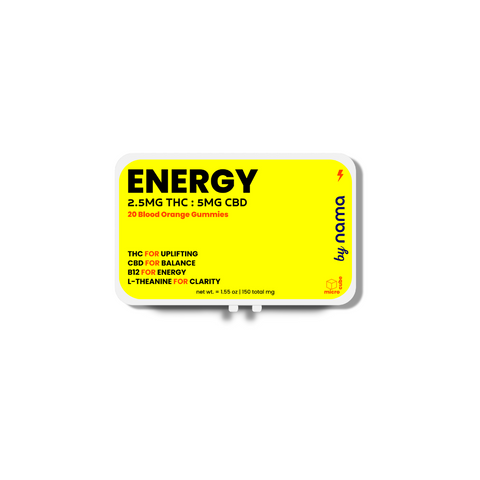
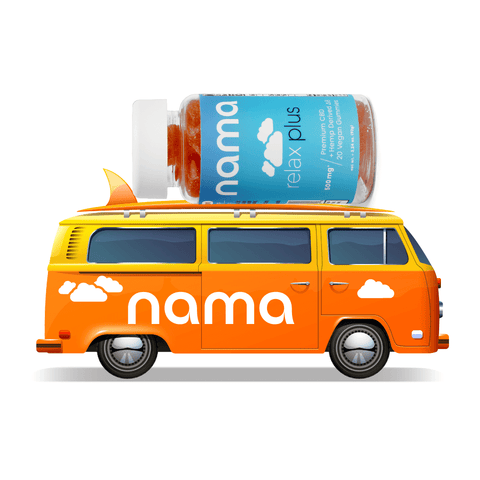
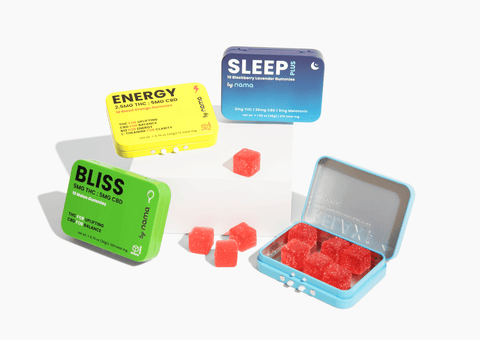
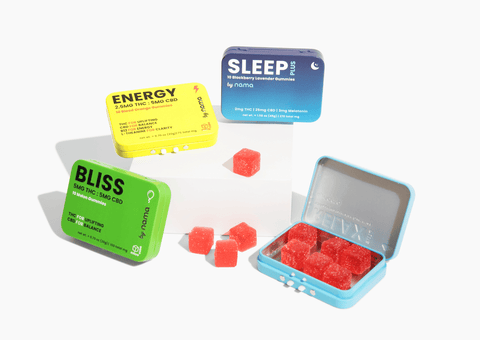
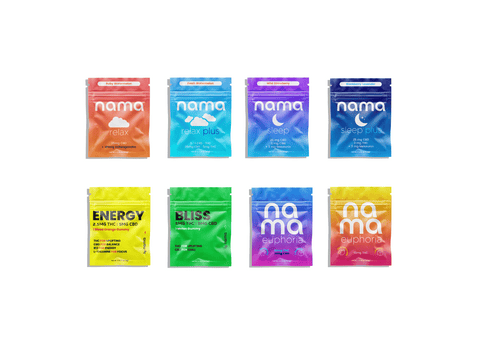
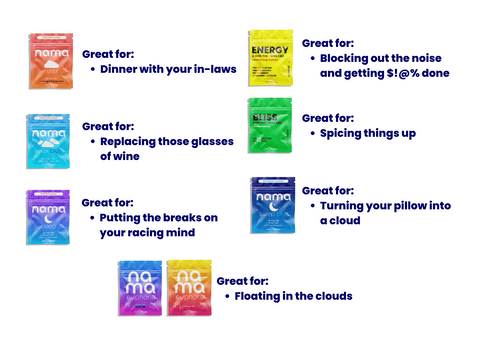
![Buzz Drops™ [THC Drink Drops]](http://www.namacbd.com/cdn/shop/files/nama_thc_buzz_drops.png?v=1711412866&width=480)
![Buzz Drops™ [THC Drink Drops]](http://www.namacbd.com/cdn/shop/files/buzz-drop-wine-comparison.png?v=1736882023&width=480)
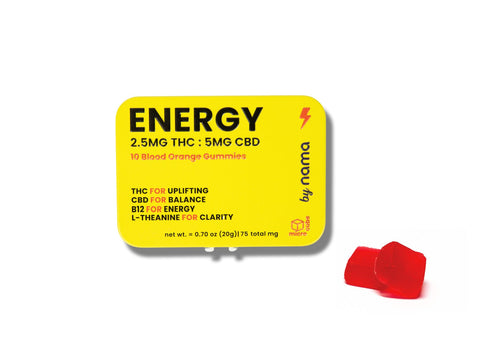
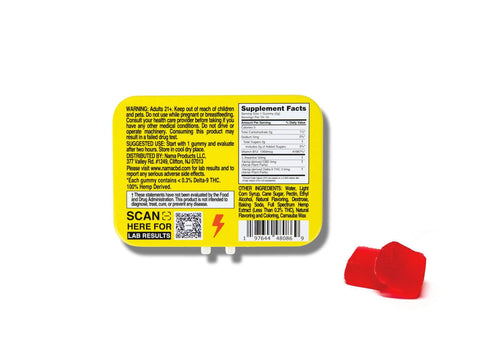
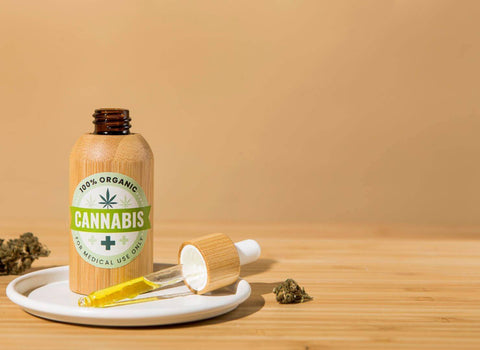


Comments (0)
There are no comments for this article. Be the first one to leave a message!